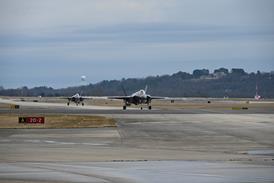In true Japanese tradition, the partnership between MBB and Kawasaki came about with the help of a third-party "matchmaker" - Boeing-Vertol - which was working on the Kawasaki-Vertol 107 commercial variant of its CH-46 Sea Knight and marketing MBB's BO105 in the USA. When the US manufacturer decided it was not interested in developing a light twin, in 1977 the Japanese and German companies got together.
The Europeans saw a market for the BK117 as a passenger and utility transport: Kawasaki wanted to be the first Japanese company to build and certificate an indigenous rotorcraft - market success was almost a secondary goal. "The prospective market in Japan was at the time quite small, but the public were already educated on the safety aspects of single-engine types: as a result there was a demand for a twin in corporate, offshore and utility markets," says Eurocopter programme manager Manfred Merk.
The companies split the BK117 development costs, workshares and markets: Europe, Africa and the Americas for the European firm; and the Asia-Pacific region for Kawasaki - an arrangement that persists to this day. Production was organised on the "sole source" principle, whereby each company manufactured the parts it had developed, and supplied them to the other partner.
The first BK117 flew in 1979 at Ottobrun in Germany, followed shortly afterwards by the Japanese prototype, leading to type certification from the respective regulators in 1982. The EC145 made its maiden flight in June 1999, and obtained type certification in late 2000.
Compared with the BK117-C1, the EC145 has a higher, 3,585kg, take-off weight, a more spacious cabin, lower noise signature, better visibility and a digital cockpit. Deliveries started in April 2002.
Eurocopter's 60% workshare includes the main and tail rotors, intermediate and tail gearboxes, engine integration, control system, tail structure, landing gear, cockpit structure, windows and doors. Kawakaski's 40% share includes the fuselage structure, main transmission, and electrical and fuel systems. Final assembly takes place in Donauworth, Germany, and Gifu, Japan.
Source: Flight International























